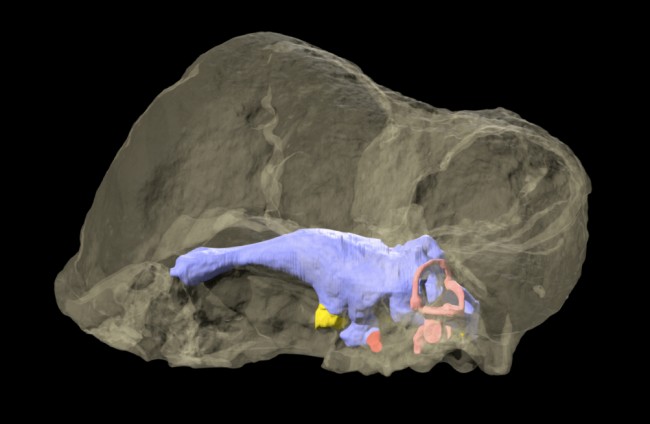Ancient Texas Reptile Discovered After 70 Years
November 20, 2017

An extinct reptile that roamed Texas more than 200 million years ago had a strikingly dome-shaped head with a very thick skull and a large natural pit on top that lends the appearance of an extra eye.
The skull of the new species, called Triopticus primus, meaning “the first with three eyes,” was scanned at the Jackson School of Geosciences CT lab, which allowed the researchers to reconstruct the skull’s internal anatomy. Researchers at Virginia Tech led the study that looked at the 230-million-year-old skull found in the Jackson School collection.
The findings, published in September 2016 in the journal Current Biology, reveal new clues about the evolutionary history of dinosaurs because the thickened skull roof is nearly identical to that of the distantly related pachycephalosaur dinosaurs that lived more than 100 million years later. Complete details of what Triopticus primus looked like and how big it was are not yet known. For now, researchers only have a fragment of skull.
The team’s discovery of this specimen — originally collected by the Work Projects Administration (WPA) in 1940 — happened in the Jackson School’s Texas Vertebrate Paleontology Collections in 2010, where it had been lying in plain sight for 70 years. Lead author Michelle Stocker was a Ph.D. student and coauthor Sterling Nesbitt was a postdoctoral researcher, both at the Jackson School, when they found the specimen.
Stocker is now a research scientist and Nesbitt an assistant professor, both at Virginia Tech. It is not uncommon for new species to be found in fossil collections around the world. The WPA, a Depression-era work program, found so many fossils during its short span of work that they didn’t have time to clean all of them.
“These collections are the foundation of natural history research, and this new animal illustrates how exciting discoveries are continually made thanks to the forethought and investment of past generations,” said Matthew Brown, co author and director of the Texas Vertebrate Paleontology Collections.
Jackson School Professor Timothy Rowe was a co-author, as were former Jackson School students Katharine Criswell, now a Ph.D. student at the University of Chicago, and William Parker, now a paleontologist at Petrified Forest National Park.
Back to the Newsletter